26th August, 2025
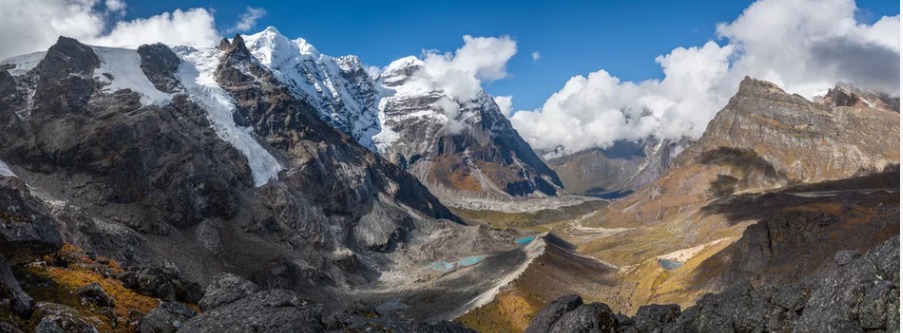
Mar 25, 2024
Mera Peak Climbing in January
- How long does it take to climb Mera Peak?
- Is Mera Peak difficult to climb?
- Is Mera Peak harder than Kilimanjaro?
- Is Mera Peak easier than Island Peak?
- Why Mera Peak Climb In January
- Mera Peak Climbing Permit, Guide, and Accommodation
- Can Beginner Trekkers Do Mera Peak
- Mera Peak Weather, Climate, and Temperature In January
- Successful Tips For Mera Peak
- Why Mera Peak Climb In January
- Can I Do Mera Peak Without Guide - What Is The Process
- How Much Does It Cost To Climb Mera Peak
- Is Mera Peak Climbing Dangerous
- Mera Peak Climbing Distance
- Elevation Gain During the Mera Peak Climb
- Conclusion
- Mera Peak Climbing Packages
Climbing Mera Peak in January presents a thrilling adventure amidst Nepal's winter season, offering both challenges and stunning rewards for mountaineers. As Nepal's highest trekking peak at 6,476 meters (21,246 feet), Mera Peak stands as a formidable yet achievable goal for those seeking to explore the Himalayas.
January in Nepal brings clear skies and stable weather conditions, making it an ideal time for climbing Mera Peak. The days are crisp and sunny, providing excellent visibility for trekking and summit attempts. However, temperatures can drop significantly, especially at higher altitudes and during the night, requiring climbers to pack and prepare for cold conditions. Proper layering with insulated jackets, thermal base layers, hats, gloves, and waterproof outerwear is essential to stay warm and comfortable throughout the expedition.
The trek to Mera Peak typically begins with a flight to Lukla, followed by a scenic trek through Sherpa villages, dense forests, and alpine landscapes. As climbers ascend towards Mera Peak Base Camp and High Camp, they traverse snowy trails and glacier terrain, gradually acclimatizing to the altitude under the guidance of experienced Sherpa guides.
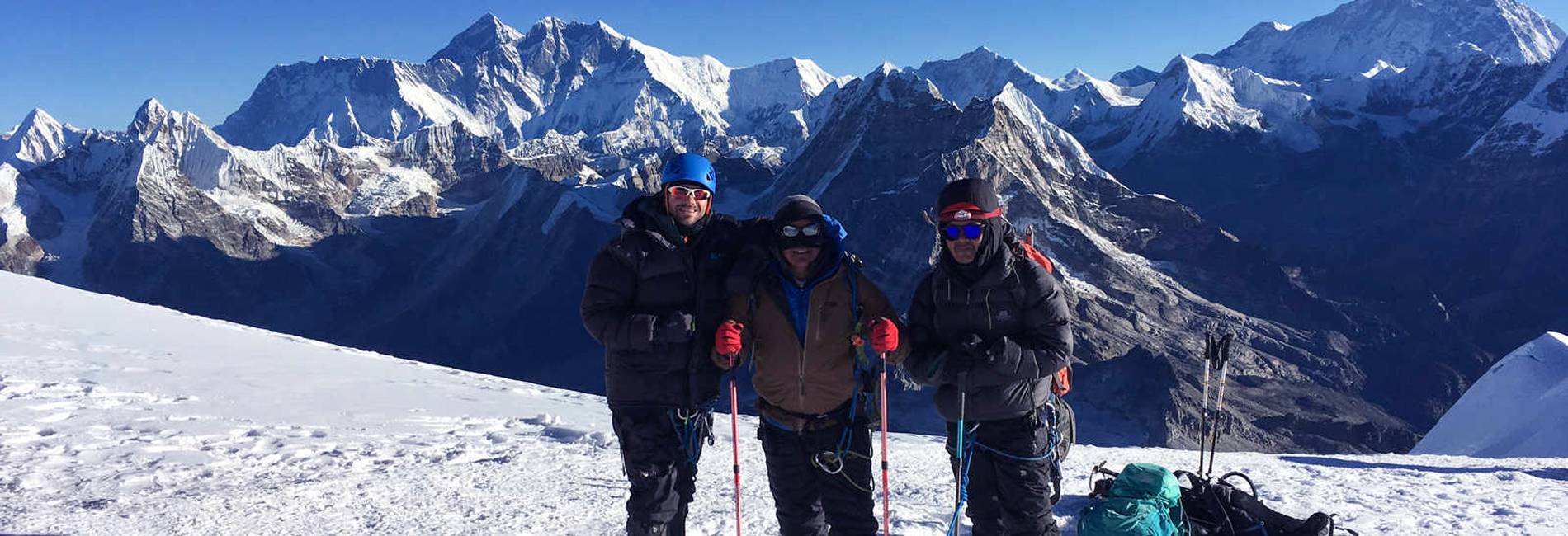
MERA PEAK CLIMBING
Mera Peak Climbing is an exhilarating adventure in Nepal that gives you an opportunity to reach the summit of Mera Peak at more than 6400m above sea level. Actually, it is the highest climbing (w...
Summit day on Mera Peak involves an early start to catch the sunrise and clear weather conditions. The climb itself is non-technical but challenging due to the altitude and snowy slopes, requiring stamina and determination. From the summit, climbers are rewarded with breathtaking panoramic views of Everest, Lhotse, Makalu, and other Himalayan peaks stretching across the horizon.
Choosing January for Mera Peak climbing ensures a quieter trekking experience with fewer climbers on the trail compared to peak seasons. It allows adventurers to immerse themselves in the tranquility of Nepal's winter wilderness while experiencing the thrill of summiting one of its highest peaks. With proper preparation, including physical conditioning, acclimatization, and the guidance of seasoned Sherpa guides, climbing Mera Peak in January promises an unforgettable Himalayan adventure filled with achievement and natural beauty.
How long does it take to climb Mera Peak?
Climbing Mera Peak typically takes about 15 to 18 days, depending on the chosen itinerary and weather conditions. The journey begins with a flight from Kathmandu to Lukla, followed by a trek through picturesque Sherpa villages and dense forests towards Mera Peak Base Camp. Acclimatization days are crucial for adjusting to the altitude and reducing the risk of altitude sickness. From Base Camp, climbers ascend to High Camp and then make their summit push. The climb itself usually takes around 8 to 10 hours from High Camp to the summit and back, with time for rest breaks and weather considerations. The descent to Lukla follows a similar route, allowing for a gradual return to lower altitudes and concluding with a flight back to Kathmandu.

MERA PEAK CLIMBING 17 DAYS
This is an excellent opportunity to climb Nepal’s highest peak without having to obtain a permit (6,476m/21,190ft). From the summit, you will have stunning views of several 8000m plus peaks, such as E...
Is Mera Peak difficult to climb?
Mera Peak is considered challenging but feasible for climbers with basic mountaineering skills and good physical fitness. The climb is non-technical, involving trekking through varied terrain including glaciers and snow slopes. However, the altitude (6,476 meters / 21,246 feet) poses a significant challenge, requiring climbers to acclimatize properly and manage potential altitude-related symptoms. With proper preparation, including cardiovascular training, strength conditioning, and acclimatization hikes, many climbers successfully summit Mera Peak each year under the guidance of experienced Sherpa guides.
Is Mera Peak harder than Kilimanjaro?
Comparing Mera Peak and Kilimanjaro involves different factors such as altitude, terrain, and technical difficulty. Mera Peak, at 6,476 meters (21,246 feet), is Nepal's highest trekking peak and involves trekking through snow and glaciers with basic mountaineering skills required. While non-technical, the altitude and cold weather make it physically demanding.
Kilimanjaro, Africa's highest peak at 5,895 meters (19,341 feet), is a non-technical trekking peak that requires endurance and acclimatization due to high altitude. The challenge on Kilimanjaro lies in altitude acclimatization and navigating through various ecosystems, including rainforests and alpine desert.
While both peaks present challenges, Mera Peak is generally considered more physically demanding due to higher altitude and colder conditions, requiring climbers to be well-prepared for the elements and altitude-related risks.

MERA PEAK CLIMBING 15 DAYS
The Mera Peak Expedition is a 15-day trek that takes you through some of the most stunning landscapes and challenging trails in Nepal. Mera Peak is the highest trekking peak in Nepal, standing at 6,47...
Is Mera Peak easier than Island Peak?
Mera Peak and Island Peak (Imja Tse) are both popular trekking peaks in Nepal, each with its own challenges and characteristics. Mera Peak, at 6,476 meters (21,246 feet), is known for its non-technical climb involving glacier crossings and snow slopes. It requires basic mountaineering skills and proper acclimatization but is generally accessible to climbers with good fitness levels and determination.
Island Peak, standing at 6,189 meters (20,305 feet) in the Everest region, is considered more technical than Mera Peak. Climbing Island Peak involves using fixed ropes, traversing crevasses, and ascending steep ice and rock faces. It requires proficiency in technical climbing skills and experience with glacier travel.
In comparison, Mera Peak is often seen as less technical and more straightforward in terms of climbing skills required. However, both peaks demand physical preparation, acclimatization, and the guidance of experienced Sherpa guides to ensure safety and successful summit attempts.
Why Mera Peak Climb In January
Climbing Mera Peak in January offers a unique experience amidst Nepal's winter season. January is characterized by clear skies and stable weather conditions, providing excellent visibility for trekking and summit attempts. The trekking trails are less crowded compared to peak seasons, offering a quieter and more serene trekking experience through picturesque Sherpa villages and pristine alpine landscapes. The cold temperatures ensure that the snow-covered terrain remains stable and manageable for climbers, enhancing the beauty of the surroundings. Choosing January for Mera Peak climb allows adventurers to enjoy panoramic views of Everest and other Himalayan peaks from the summit, making it a memorable and rewarding expedition in the heart of the Himalayas.

MERA PEAK EXPEDITION 14 DAYS
The Mera Peak Expedition is a 14-day trek that offers a unique and challenging route to the summit of Mera Peak. The Upper Route is a less-traveled path that takes you through some of the most remote...
Mera Peak Climbing Permit, Guide, and Accommodation
To climb Mera Peak, climbers need several permits, including the Sagarmatha National Park Entry Permit and the Mera Peak Climbing Permit issued by the Nepal Mountaineering Association (NMA). These permits ensure access to the designated climbing routes and help fund conservation efforts in the region. Hiring a reputable trekking agency like Sherpa Expedition ensures access to experienced guides who provide essential support, navigation, and safety measures throughout the expedition. Accommodation during the trek typically includes teahouses in lower elevations and camping at higher altitudes, with basic amenities such as meals and sleeping arrangements provided. Sherpa guides play a crucial role in organizing accommodation, managing logistics, and ensuring climbers' comfort and safety throughout the Mera Peak climb.
Can Beginner Trekkers Do Mera Peak
Mera Peak is achievable for beginner trekkers with good physical fitness, determination, and willingness to undergo proper training and preparation. While climbing Mera Peak does not require technical mountaineering skills, it demands endurance and acclimatization to high altitudes. Beginner trekkers should consider joining guided expeditions led by experienced Sherpa guides who provide necessary training, support, and safety measures. Training should include cardiovascular exercises, strength conditioning, and altitude acclimatization hikes to prepare for the physical demands of the trek. With guidance and careful planning, many beginner trekkers successfully summit Mera Peak, enjoying the challenge and breathtaking views from the summit.
Mera Peak Weather, Climate, and Temperature In January
January weather on Mera Peak is characterized by cold temperatures and clear skies. Daytime temperatures at lower elevations can range from slightly above freezing to below freezing, while higher altitudes experience colder conditions. Nighttime temperatures often drop well below freezing, requiring climbers to pack warm clothing and insulated gear. The weather is generally dry, with occasional snowfall adding to the scenic beauty of the trekking route. Clear skies offer excellent visibility for trekking and summit attempts, although climbers should be prepared for cold and potentially harsh weather conditions. Proper layering with insulated jackets, thermal base layers, hats, gloves, and waterproof outerwear is essential to stay warm and comfortable throughout the expedition.
Successful Tips For Mera Peak
- Physical Preparation: Train in advance with cardio exercises, strength training, and endurance activities to build stamina and prepare for the altitude.
- Acclimatization: Follow a gradual ascent schedule with rest days to acclimatize to high altitudes and reduce the risk of altitude sickness.
- Gear Selection: Pack appropriate clothing layers, including insulated jackets, thermal base layers, hats, gloves, and waterproof outerwear, to stay warm and dry in cold weather.
- Hydration and Nutrition: Stay hydrated and maintain energy levels with regular snacks and meals throughout the trek.
- Weather Monitoring: Monitor weather forecasts and adjust plans accordingly for safe trekking and summit attempts.
- Listen to Guides: Trust experienced Sherpa guides for navigation, safety, and local knowledge during the expedition.
Following these tips ensures a safe and enjoyable climb of Mera Peak, allowing climbers to maximize their chances of summiting and cherish the stunning views from Nepal's highest trekking peak.
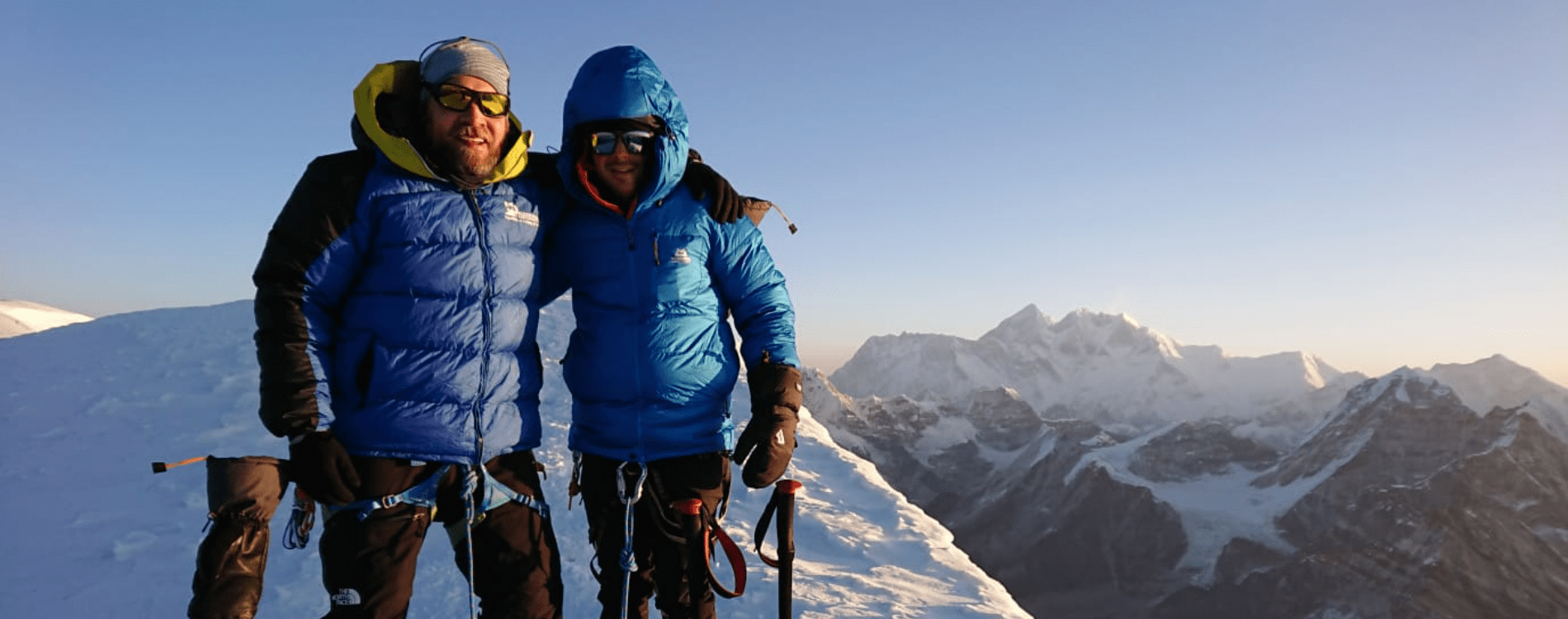
MERA PEAK SUMMIT RETURN BY HELICOPTER
Mera Peak Climbing Just in 12 Days Return By Helicopter to Lukla and flight back Kathmandu.This is an excellent opportunity to climb Nepal’s highest peak without having to obtain a permit (6,476m/21,1...
Why Mera Peak Climb In January
Climbing Mera Peak in January offers several advantages for adventurous climbers. January boasts clear skies and stable weather conditions in Nepal, providing excellent visibility and picturesque views of the surrounding Himalayan peaks. The trails are less crowded compared to peak seasons, allowing for a more serene trekking experience through snow-covered landscapes and traditional Sherpa villages. The cold temperatures ensure that the snow and ice conditions are stable, making it easier to navigate the glacier terrain en route to the summit. Choosing January for Mera Peak climb also means enjoying quieter trails and a more intimate experience with the stunning natural beauty of the Everest region.
Can I Do Mera Peak Without Guide - What Is The Process
While it is possible to attempt Mera Peak without a guide, it is highly recommended to hire an experienced Sherpa guide for safety, navigation, and support. The process for climbing Mera Peak without a guide involves obtaining the necessary permits, such as the Sagarmatha National Park Entry Permit and Mera Peak Climbing Permit from the Nepal Mountaineering Association (NMA). Climbers must arrange their own logistics, including transportation, accommodation, and equipment. Navigation through the challenging terrain and glacier crossings requires prior mountaineering experience and proficiency in using technical gear like crampons and ice axes. However, the presence of crevasses and unpredictable weather conditions on Mera Peak make solo attempts risky without proper support and expertise. Choosing a reputable trekking agency like Sherpa Expedition ensures a safer and more organized climb with experienced guides who enhance the overall experience and increase the likelihood of a successful summit.
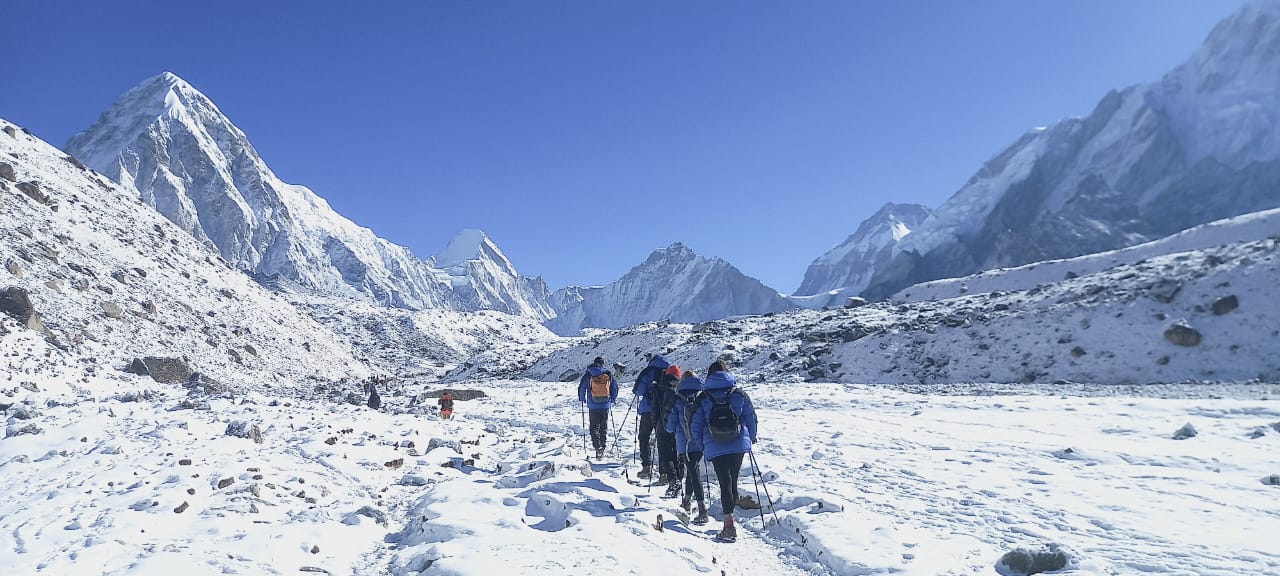
MERA AND ISLAND PEAK CLIMBING
Embark on a thrilling mountaineering adventure like no other with the Mera and Island Peak Climbing expedition crafted by We Sherpa Expedition and Trekking. This exclusive package is designed for adve...
How Much Does It Cost To Climb Mera Peak
The cost of climbing Mera Peak varies depending on several factors, including the trekking agency, itinerary, services included, and group size. On average, the cost ranges from USD 3,000 to USD 6,000 per person for a standard 15 to 18-day expedition. This cost typically covers permits (Sagarmatha National Park Entry Permit and Mera Peak Climbing Permit), accommodation, meals, transportation (including flights to and from Lukla), experienced Sherpa guides, porter services, and necessary climbing equipment like ropes, harnesses, and tents. Additional expenses may include personal gear, travel insurance, visa fees, tips for guides and porters, and optional expenses in Kathmandu. Choosing a reputable trekking agency like Sherpa Expedition ensures high-quality services, safety measures, and support throughout the climb, making the investment worthwhile for an unforgettable Himalayan adventure.
Is Mera Peak Climbing Dangerous
Climbing Mera Peak involves inherent risks associated with high-altitude trekking and mountaineering. The main dangers include altitude sickness, extreme weather conditions (including cold temperatures and high winds), crevasses on glaciers, and physical exertion at high altitudes. Proper acclimatization, physical fitness, and adherence to safety protocols are crucial for minimizing risks during the expedition. Hiring experienced Sherpa guides who are familiar with the terrain and weather patterns enhances safety and reduces potential dangers. Despite these risks, thousands of climbers successfully summit Mera Peak each year, guided by experienced professionals who prioritize safety and ensure a memorable and secure Himalayan adventure.
Mera Peak Climbing Distance
The total trekking distance for climbing Mera Peak varies depending on the chosen route and itinerary. Typically, the trek covers approximately 60 to 70 kilometers (37 to 43 miles) round trip from Lukla to Mera Peak Base Camp and back. The trekking distance includes gradual ascents through diverse landscapes, including Sherpa villages, rhododendron forests, alpine meadows, and glacier terrain towards the summit of Mera Peak. Climbers should be prepared for daily trekking durations ranging from 4 to 7 hours, with additional time allocated for acclimatization and rest days. Proper physical conditioning and endurance training are essential for managing the trekking distance and altitude gain during the expedition.
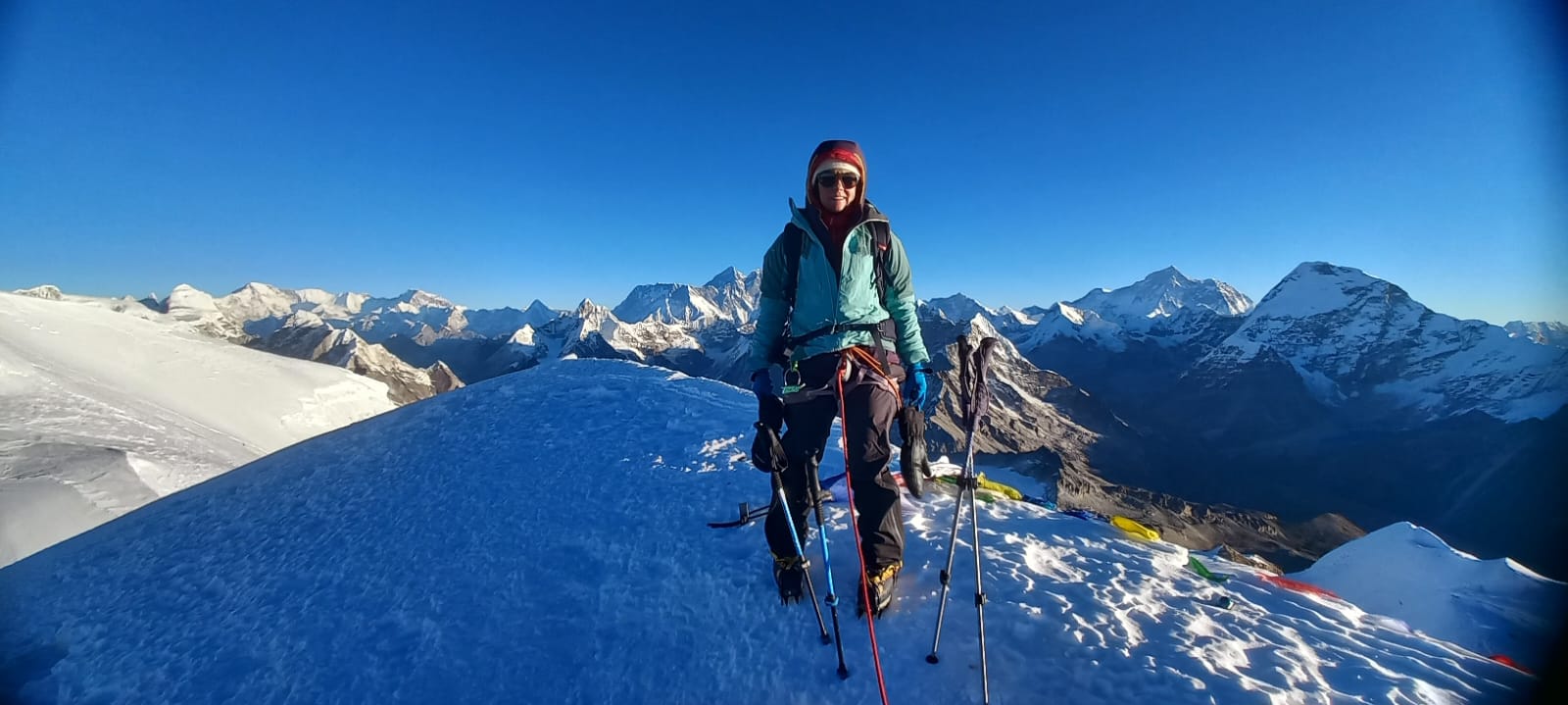
Three Peak Expedition
Embark on an unforgettable journey to the heart of the Himalayas as you conquer three majestic peaks: Mera Peak, Island Peak, and Lobuche Peak. This ultimate adventure combines technical climbing, bre...
Elevation Gain During the Mera Peak Climb
The elevation gain during the Mera Peak climb is significant, starting from Lukla (approximately 2,860 meters / 9,383 feet) and ascending to Mera Peak's summit at 6,476 meters (21,246 feet). The climb involves gradual altitude gain through the trekking stages, with several acclimatization days strategically planned to aid in adjusting to the thinning air. Key elevation points include Mera Peak Base Camp (around 5,300 meters / 17,388 feet) and High Camp (around 5,800 meters / 19,029 feet) before the final push to the summit. Climbers should be mindful of the altitude gain and take adequate rest breaks, hydrate well, and follow their guides' instructions to minimize the risk of altitude sickness and ensure a successful summit attempt.
Conclusion
Climbing Mera Peak offers an exhilarating and challenging adventure in Nepal's Himalayas, particularly appealing in January for its clear skies and quieter trails. While it presents risks such as altitude sickness and harsh weather conditions, these challenges are manageable with proper preparation and the guidance of experienced Sherpa guides. The journey involves navigating diverse landscapes, from lush forests to snowy glaciers, culminating in panoramic views of Everest and surrounding peaks from the summit. Whether trekking with a guided group or independently, Mera Peak promises an unforgettable experience for adventurers seeking to conquer one of Nepal's highest trekking peaks and immerse themselves in the natural beauty of the Everest region.
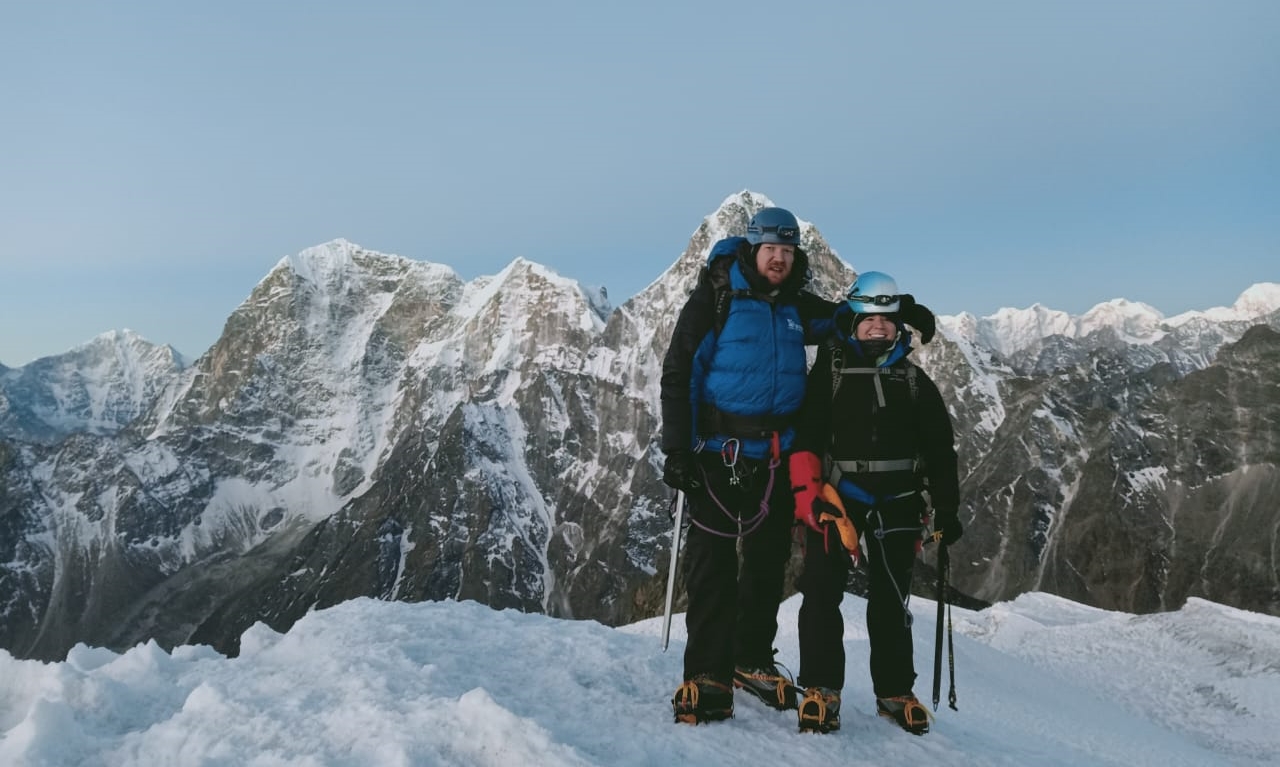
LOBUCHE PEAK CLIMBING
Lobuche East (6,119m/20,075ft), set in Nepal's stunning Khumbu on the Nepalese side of Everest.The best time to go trekking in Nepal is in Autumn (September-November) and in...
Mera Peak Climbing Packages
Mera Peak Summit Return By Helicopter

ISLAND PEAK CLIMBING
Sherpa Expedition & Trekking (Est.1977) are pleased to announce FOR ADVENTURERS the most awesome, exhilarating & unforgettable climbing and treks on offer anywhere today!...
Any Questions? Let Us Know.
Recent Posts
17th June, 2025


















